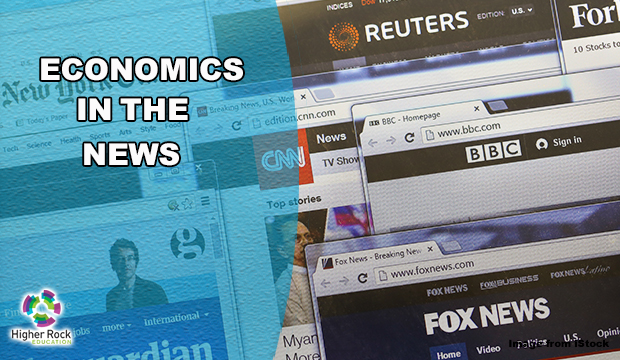
Economics in the News – July 25-31, 2022
Economics impacts our lives every day. Below are some of the top storylines from this past week related to economics.
o Trick-or-treaters may come away disappointed this fall, as Hershey has warned of a shortage of its signature candies that are handed out by millions of people every Halloween. Hershey begins producing Halloween and holiday candy each spring, but the company is facing a shortage of raw ingredients that has been caused by the war in Ukraine. It also has been impacted by the efforts of European nations to restrict oil and gas from Russia because of the equipment and supplies that are in Germany.
Halloween is one of the major sales seasons for candymakers, along with Valentine’s Day, Easter and the end of the year. Candy last Halloween brought in $4.5 billion over an eight-week sales period. Sales of candy have surged during the pandemic, increasing 11 percent in 2021 from the year prior. Total sales are expected to reach $44.9 billion by 2026. [The Washington Post]
o Buy now, pay later. The ‘buy now, pay later,’ or BNPL movement has exploded onto the scene during the COVID-19 pandemic, allowing consumers to buy clothing, cosmetics and other discretionary expenditures and pay for them over a period of installments. Users of BNPL platforms often attribute their use to a distaste of credit cards, because unlike credit cards, many BNPL platforms are interest-free. But companies charge late fees when timely payments aren’t made. Businesses can complete more transactions -- despite paying up to a six percent transaction fee, compared to an average of two percent on credit cards – making BNPL options attractive.
But BNPL companies are facing intensifying scrutiny. In their existence, the platforms haven’t been subject to much regulatory oversight. The human psychology and consumer behavior of the BNPL platforms are coming into question. Detractors argue that companies exploit the desire for instant gratification. Research suggests that 17 percent of BNPL users turn to the service after maxing out their credit card and making purchases they are unable to otherwise afford. [Bloomberg]
o What would you do with $1.337 billion? A single winning lottery ticket for Friday night’s Mega Millions jackpot was bought in a Chicago suburb, according to megamillions.com. The winner came from one of the 45 states – plus the District of Columbia and the U.S. Virgin Islands -- where Mega Millions tickets are sold for $2 each. The $1.337 billion is the second-largest prize in the lottery’s history, behind only the $1.54 billion jackpot in 2018.
Lottery winners lucky enough to beat the one in 303 million odds have two ways they can claim their prize. They can claim their winnings as a lump sum payment of $648.2 million, or they can receive the full amount over the course of 30 years. Both ways are taxed as ordinary income with the winner almost certainly hitting the highest tax bracket of 37 percent. According to tax experts, the total amount of taxes depends on where the winner lives and the local tax rate, but after taxes, the jackpot winner could take home one-third of the jackpot amount. [Bloomberg]
o With consumers cutting down on discretionary purchases because of high inflation, retailers are stuck with excess inventory. Returns have exasperated the oversupply, as shoppers returned 16.6 percent of their purchase in 2021, an increase from 10.6 percent returned in 2020. Returns resulted in $761 billion in lost sales for retailers after they were unable to resell the item.
Major retailers suggest that shoppers’ habits are evolving. Consumers are focusing on buying necessities, rather than items such as clothing, cosmetics and electronics. As a result of oversupply, some retailers have turned to liquidators to take their excess supply of goods and clear space on the shelves. [The New York Times]
o The impacts of the health toll that the COVID-19 pandemic has made are becoming more clear. As many Americans missed doctor’s appointments and screenings, death rates stemming from heart disease and stroke have risen sharply. In addition, COVID-19 infection increases risk for stroke and heart attack. Still, experts warn that it could be years before the full ramifications of COVID-19 are known.
Drug-related deaths and excessive drinking habits have also increased. More than 107,000 drug-related deaths were recorded in 2021, while alcohol-related deaths increased by 25 percent from 2019 to 2020. More people experienced symptoms of anxiety and depression during the first year of the pandemic, while the U.S. gun-homicide rate increased to the highest level since 1994. [The Wall Street Journal]